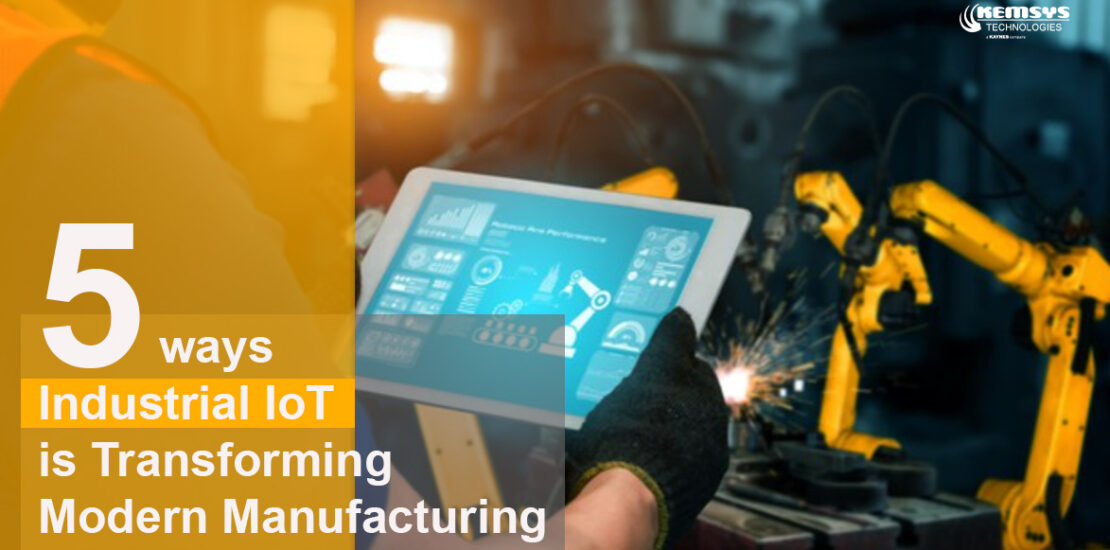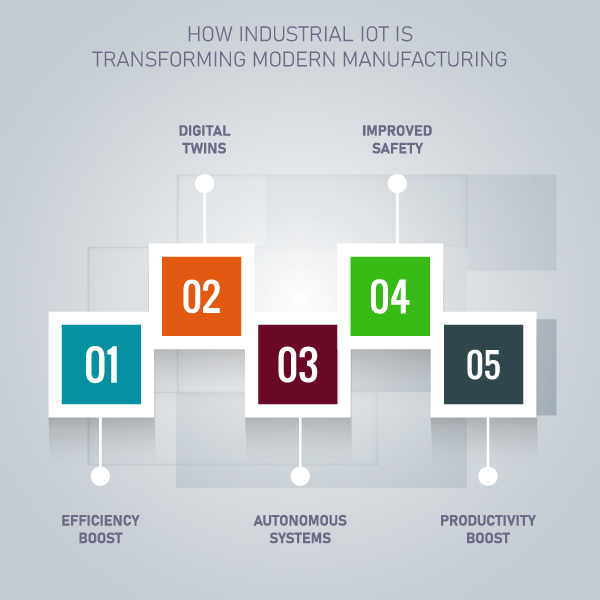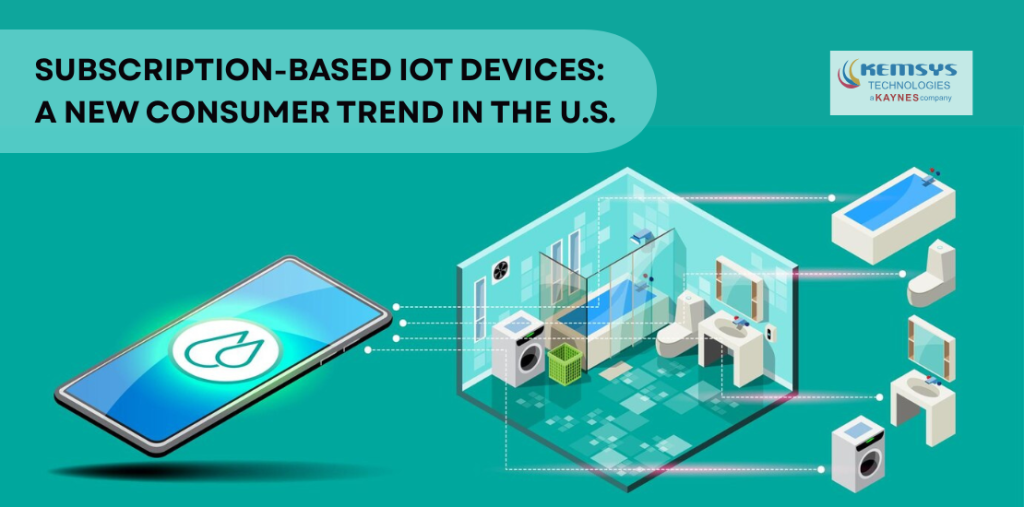5 Ways Industrial IoT is Transforming Modern Manufacturing
- April 8, 2021
- Posted by: Swapnil Ghaisas
- Categories: Device Engineering, Internet of Things, Thought Leadership

Industrial IoT: How It is Enabling Smart Manufacturing
It is not uncommon for growth to be greeted by a little scepticism. However, the Internet of Things (IoT) has made a seamless entrance into our homes as personal assistance devices, Industrial IoT is setting down the groundwork to take its rightful place in modern manufacturing.
IoT is no longer the next big thing, it is here and it is here to stay. Following are the ways in which Industrial IoT is transforming modern manufacturing.
Efficiency Boost
When it comes to the supply chain process, it is not uncommon for businesses to work in the dark. While each stage of the production process takes a certain time, there is an awful amount of dead time between the completion of one task and the initiation of another task.
Industrial IoT promotes smarter and more seamless working with tools that offers visualization and communication throughout the entire production line, facilitating more efficient methods because inefficiencies become scarce. Industrial Internet of Things (IIoT) visualization presents a holistic view of assets and helps with future maintenance and prevent failures – maximizing production time by avoiding production breakdowns.
Featured article: Remote pump monitoring: end to end secure and reliable remote pump monitoring system
Digital Twins
A Digital twin is one of the latest innovations in Industrial IoT technology. A digital twin is a complete replica of a real-world production line. Using simulation, the digital twin can test the life-cycle of physical assets, developing a better version of your products while identifying inefficiencies in the present production line.
Plans using digital twin technology have the ability to predict where physical assets are most likely to run into maintenance issues, preventing machine failures that can halt or slow down production.

Self-healing, Autonomous Systems
Through the advancement in machine learning, IIoT technology is becoming capable of intelligently spotting and correcting issues within the system without any human intervention.
Duke Energy – a power holding company out of Florida claims that their grid system can automatically reconfigure itself wherever the power is lost at home. Conventionally, an outage caused by a storm, for example, can take hours to resolve because the engineer needs to identify and locate the source and then do the repairing. With such autonomous systems, it all can be achieved in seconds.
Imagine its implication in the industry. It allows employers to focus on other critical functions while the machines are self-maintained.
Improved Safety
It’s not been long when the idea of a factory floor was considered one of the most dangerous places to work, considering loud-changing injuries and harsh working space. It has, at times, caused difficulties attracting new talents, especially the new generation.
A manufacturing plant is potentially a dangerous place, but with IIot sensors and connected devices, it’s possible to detect malfunction which can cause hazardous injuries.
Industrial IoT has made it possible for firms to monitor through video analysis or equipping employees with sensors to detect any hazardous situations that can cause any harm.

Productivity
Improving employee productivity has always been management’s one of the lookouts. These efforts have mostly met with a diminishing outcome because most processes in the past have required manual inputs and intervention.
There is a growing range of machine monitoring technologies that use the IIoT to help monitor continuous activities while encouraging engagement from employees in the form of challenges and gamification.
Conclusion
Industrial IoT is facilitating industry 4.0 with increased efficiency, productivity, engagement and safety, driving steady growth in the manufacturing industry.
Featured Articles
- All
- Device Engineering
- Digital Engineering
- Internet of Things
- Quality Engineering




